As this is a curated collection of books from a personal library, please be mindful that some books may be out of print, have more current editions, or be available in digital formats. A large portion of the books presented are related to research and reference.
Common Bodies of Knowledge
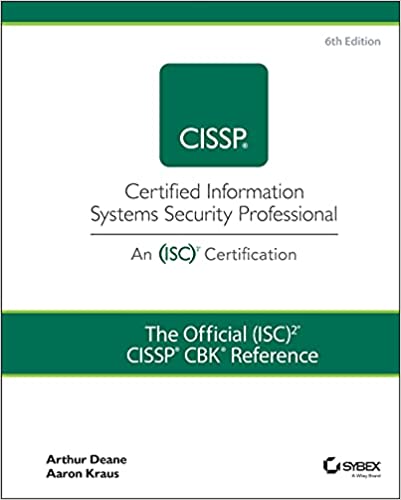
The only official, comprehensive reference guide to the CISSPThoroughly updated for 2021 and beyond, this is the authoritative common body of knowledge (CBK) from (ISC)2 for information security professionals charged with designing, engineering, implementing, and managing the overall information security program to protect organizations from increasingly sophisticated attacks. Vendor neutral and backed by (ISC)2, the CISSP credential meets the stringent requirements of ISO/IEC Standard 17024.This CBK covers the current eight domains of CISSP with the necessary depth to apply them to the daily practice of information security. Revised and updated by a team of subject matter experts, this comprehensive reference covers all of the more than 300 CISSP objectives and sub-objectives in a structured format with:
- Common and good practices for each objective
- Common vocabulary and definitions
- References to widely accepted computing standards
- Highlights of successful approaches through case studies
Whether you've earned your CISSP credential or are looking for a valuable resource to help advance your security career, this comprehensive guide offers everything you need to apply the knowledge of the most recognized body of influence in information security.
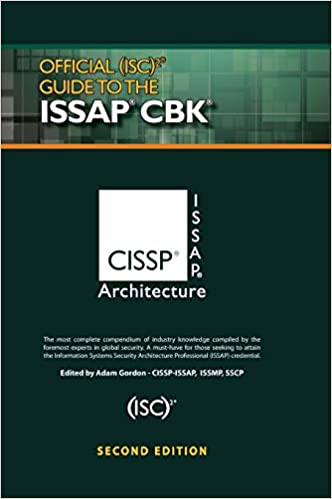
Candidates for the CISSP-ISSAP professional certification need to not only demonstrate a thorough understanding of the six domains of the ISSAP CBK, but also need to have the ability to apply this in-depth knowledge to develop a detailed security architecture. Supplying an authoritative review of the key concepts and requirements of the ISSAP CBK, the Official (ISC)2® Guide to the ISSAP® CBK®,Second Edition provides the practical understanding required to implement the latest security protocols to improve productivity, profitability, security, and efficiency. Encompassing all of the knowledge elements needed to create secure architectures, the text covers the six domains: Access Control Systems and Methodology, Communications and Network Security, Cryptology, Security Architecture Analysis, BCP/DRP, and Physical Security Considerations. Newly Enhanced Design – This Guide Has It All!
- Only guide endorsed by (ISC)2
- Most up-to-date CISSP-ISSAP CBK
- Evolving terminology and changing requirements for security professionals
- Practical examples that illustrate how to apply concepts in real-life situations
- Chapter outlines and objectives
- Review questions and answers
- References to free study resources
Read It. Study It. Refer to It Often.Build your knowledge and improve your chance of achieving certification the first time around. Endorsed by (ISC)2 and compiled and reviewed by CISSP-ISSAPs and (ISC)2 members, this book provides unrivaled preparation for the certification exam and is a reference that will serve you well into your career. Earning your ISSAP is a deserving achievement that gives you a competitive advantage and makes you a member of an elite network of professionals worldwide.
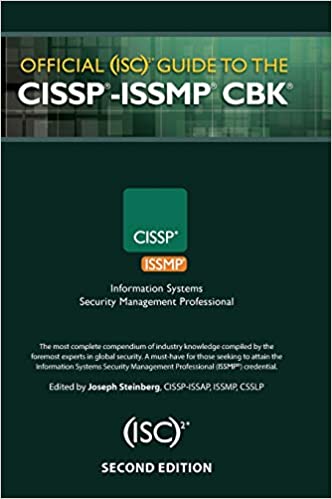
The Certified Information Systems Security Professional-Information Systems Security Management Professional (CISSP-ISSMP®) certification was developed for CISSPs who are seeking to further their careers and validate their expertise in information systems security management. Candidates for the ISSMP need to demonstrate a thorough understanding of the five domains of the ISSMP Common Body of Knowledge (CBK®), along with the ability to apply this in-depth knowledge to establish, present, and govern information security programs, while demonstrating management and leadership skills. Supplying an authoritative review of key concepts and requirements, the Official (ISC)2® Guide to the CISSP®-ISSMP® CBK®, Second Edition is both up to date and relevant. This book provides a comprehensive review of the five domains in the ISSMP CBK: Security Leadership and Management, Security Lifecycle Management, Security Compliance Management, Contingency Management, and Law, Ethics, and Incident Management. Numerous illustrated examples and practical exercises are included in this book to demonstrate concepts and real-life scenarios. Endorsed by (ISC)2 and compiled and reviewed by ISSMPs and industry luminaries around the world, this book provides unrivaled preparation for the exam. Earning your ISSMP is a deserving achievement that should ultimately help to enhance your career path and give you a competitive advantage.
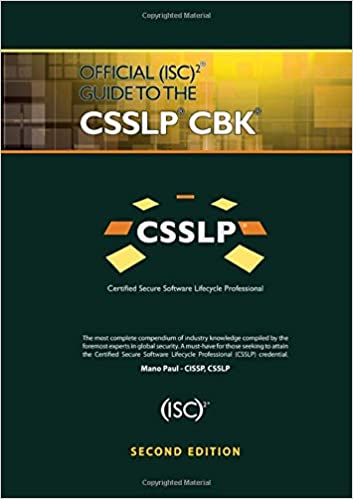
Application vulnerabilities continue to top the list of cyber security concerns. While attackers and researchers continue to expose new application vulnerabilities, the most common application flaws are previous, rediscovered threats. For example, SQL injection and cross-site scripting (XSS) have appeared on the Open Web Application Security Project (OWASP) Top 10 list year after year over the past decade. This high volume of known application vulnerabilities suggests that many development teams do not have the security resources needed to address all potential security flaws and a clear shortage of qualified professionals with application security skills exists. Without action, this soft underbelly of business and governmental entities has and will continue to be exposed with serious consequences―data breaches, disrupted operations, lost business, brand damage, and regulatory fines. This is why it is essential for software professionals to stay current on the latest advances in software development and the new security threats they create. Recognized as one of the best application security tools available for professionals involved in software development, the Official (ISC)2® Guide to the CSSLP® CBK®, Second Edition, is both up-to-date and relevant, reflecting the latest developments in this ever-changing field and providing an intuitive approach to the CSSLP Common Body of Knowledge (CBK). It provides a robust and comprehensive study of the 8 domains of the CBK, covering everything from ensuring software security requirements are included in the software design phase to programming concepts that can effectively protect software from vulnerabilities to addressing issues pertaining to proper testing of software for security, and implementing industry standards and practices to provide a high level of assurance that the supply chain is secure―both up-stream. The book discusses the issues facing software professionals today, such as mobile app development, developing in the cloud, software supply chain risk management, and more. Numerous illustrated examples and practical exercises are included in this book to help the reader understand the concepts within the CBK and to enable them to apply these concepts in real-life situations. Endorsed by (ISC)2 and written and reviewed by CSSLPs and other (ISC)2 members, this book serves as an unrivaled study tool for the certification exam and an invaluable career reference. Earning your CSSLP is an esteemed achievement that validates your efforts in security leadership to help your organization build resilient software capable of combating the security threats of today and tomorrow.
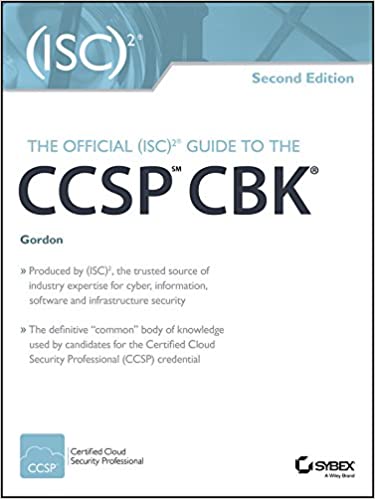
The only official body of knowledge for CCSP―the most popular cloud security credential―fully revised and updated.Certified Cloud Security Professional (CCSP) certification validates the advanced technical skills needed to design, manage, and secure data, applications, and infrastructure in the cloud. This highly sought-after global credential has been updated with revised objectives. The new third edition of The Official (ISC)2 Guide to the CCSP CBK is the authoritative, vendor-neutral common body of knowledge for cloud security professionals.This comprehensive resource provides cloud security professionals with an indispensable working reference to each of the six CCSP domains: Cloud Concepts, Architecture and Design; Cloud Data Security; Cloud Platform and Infrastructure Security; Cloud Application Security; Cloud Security Operations; and Legal, Risk and Compliance. Detailed, in-depth chapters contain the accurate information required to prepare for and achieve CCSP certification. Every essential area of cloud security is covered, including implementation, architecture, operations, controls, and immediate and long-term responses.Developed by (ISC)2, the world leader in professional cybersecurity certification and training, this indispensable guide:
- Covers the six CCSP domains and over 150 detailed objectives
- Provides guidance on real-world best practices and techniques
- Includes illustrated examples, tables, and diagrams
The Official (ISC)2 Guide to the CCSP CBK is a vital ongoing resource for IT and information security leaders responsible for applying best practices to cloud security architecture, design, operations and service orchestration.
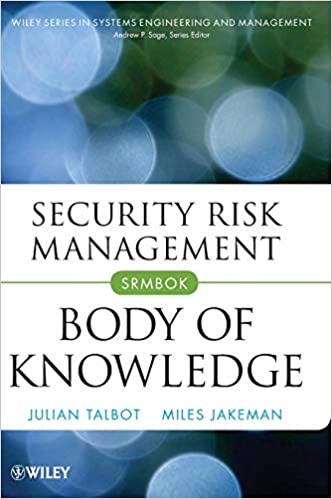
A framework for formalizing risk management thinking in today¿s complex business environmentSecurity Risk Management Body of Knowledge details the security risk management process in a format that can easily be applied by executive managers and security risk management practitioners. Integrating knowledge, competencies, methodologies, and applications, it demonstrates how to document and incorporate best-practice concepts from a range of complementary disciplines.Developed to align with International Standards for Risk Management such as ISO 31000 it enables professionals to apply security risk management (SRM) principles to specific areas of practice. Guidelines are provided for: Access Management; Business Continuity and Resilience; Command, Control, and Communications; Consequence Management and Business Continuity Management; Counter-Terrorism; Crime Prevention through Environmental Design; Crisis Management; Environmental Security; Events and Mass Gatherings; Executive Protection; Explosives and Bomb Threats; Home-Based Work; Human Rights and Security; Implementing Security Risk Management; Intellectual Property Protection; Intelligence Approach to SRM; Investigations and Root Cause Analysis; Maritime Security and Piracy; Mass Transport Security; Organizational Structure; Pandemics; Personal Protective Practices; Psych-ology of Security; Red Teaming and Scenario Modeling; Resilience and Critical Infrastructure Protection; Asset-, Function-, Project-, and Enterprise-Based Security Risk Assessment; Security Specifications and Postures; Security Training; Supply Chain Security; Transnational Security; and Travel Security.

The Cybersecurity Body of Knowledge explains the content, purpose, and use of eight knowledge areas that define the boundaries of the discipline of cybersecurity. The discussion focuses on, and is driven by, the essential concepts of each knowledge area that collectively capture the cybersecurity body of knowledge to provide a complete picture of the field.This book is based on a brand-new and up to this point unique, global initiative, known as CSEC2017, which was created and endorsed by ACM, IEEE-CS, AIS SIGSEC, and IFIP WG 11.8. This has practical relevance to every educator in the discipline of cybersecurity. Because the specifics of this body of knowledge cannot be imparted in a single text, the authors provide the necessary comprehensive overview. In essence, this is the entry-level survey of the comprehensive field of cybersecurity. It will serve as the roadmap for individuals to later drill down into a specific area of interest.This presentation is also explicitly designed to aid faculty members, administrators, CISOs, policy makers, and stakeholders involved with cybersecurity workforce development initiatives. The book is oriented toward practical application of a computing-based foundation, crosscutting concepts, and essential knowledge and skills of the cybersecurity discipline to meet workforce demands.Dan Shoemaker, PhD, is full professor, senior research scientist, and program director at the University of Detroit Mercy’s Center for Cyber Security and Intelligence Studies. Dan is a former chair of the Cybersecurity & Information Systems Department and has authored numerous books and journal articles focused on cybersecurity.Anne Kohnke, PhD, is an associate professor of cybersecurity and the principle investigator of the Center for Academic Excellence in Cyber Defence at the University of Detroit Mercy. Anne’s research is focused in cybersecurity, risk management, threat modeling, and mitigating attack vectors.Ken Sigler, MS, is a faculty member of the Computer Information Systems (CIS) program at the Auburn Hills campus of Oakland Community College in Michigan. Ken’s research is in the areas of software management, software assurance, and cybersecurity.
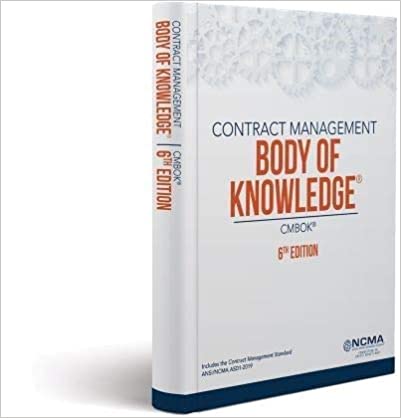
NCMA is proud to announce the publication of the Sixth Edition of the Contract Management Body of Knowledge (CMBOK). This update is driven by the changes in the Contract Management Standard Publication (CMS) Second Edition, which serves as the CMBOK’s foundation. The CMBOK Sixth Edition provides a common understanding of the terminology, practices, policies, and processes used in contract management. Primary CMBOK Adjustments. CMBOK 6 includes the following primary adjustments (see the full text of each change on the following pages): Updated the Annex to include the new ANSI-accredited CMS (ANSI/NCMA ASD 1-2019) (Page 2). Revised the CMBOK terms and definitions to match those found in the new CMS (Page 2). Added a section for the new CMS Guiding Principle—1.7 Communication and Documentation (see 3.7) (Page 4). Removed “2.4.2.3 Risk Sharing through Contract Types” and blended it into “4.1.2 Contract Types” (Page 5).

This Guide to the BPM CBOK(TM) provides a basic reference document for all practitioners. The primary purpose of this guide is to identify and provide an overview of the Knowledge Areas that are generally recognized and accepted as good practice. The Guide provides a general overview of each Knowledge Area and provides a list of common activities and tasks associated with each Knowledge Area. It also provides links and references to other sources of information which are part of the broader BPM Common Body of Knowledge.
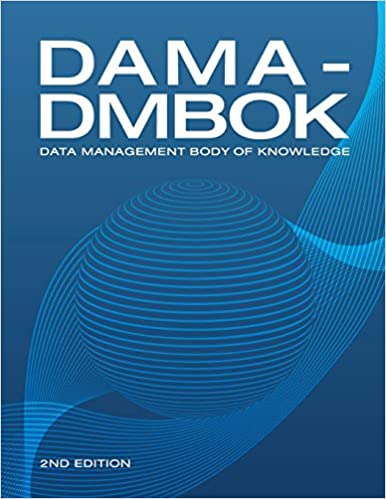
The Data Management Body of Knowledge (DAMA-DMBOK2) presents a comprehensive view of the challenges, complexities, and value of effective data management. Today's organizations recognize that managing data is central to their success. They recognize data has value and they want to leverage that value. As our ability and desire to create and exploit data has increased, so too has the need for reliable data management practices. The second edition of DAMA International's Guide to the Data Management Body of Knowledge (DAMA-DMBOK2) updates and augments the highly successful DMBOK1. An accessible, authoritative reference book written by leading thinkers in the field and extensively reviewed by DAMA members, DMBOK2 brings together materials that comprehensively describe the challenges of data management and how to meet them by:
- Defining a set of guiding principles for data management and describing how these principles can be applied within data management functional areas.
- Providing a functional framework for the implementation of enterprise data management practices; including widely adopted practices, methods and techniques, functions, roles, deliverables and metrics.
- Establishing a common vocabulary for data management concepts and serving as the basis for best practices for data management professionals.
DAMA-DMBOK2 provides data management and IT professionals, executives, knowledge workers, educators, and researchers with a framework to manage their data and mature their information infrastructure, based on these principles:
- Data is an asset with unique properties
- The value of data can be and should be expressed in economic terms
- Managing data means managing the quality of data
- It takes metadata to manage data
- It takes planning to manage data
- Data management is cross-functional and requires a range of skills and expertise
- Data management requires an enterprise perspective
- Data management must account for a range of perspectives
- Data management is data lifecycle management
- Different types of data have different lifecycle requirements
- Managing data includes managing risks associated with data
- Data management requirements must drive information technology decisions
- Effective data management requires leadership commitment
Chapters include:
- Data Management
- Data Handling Ethics
- Data Governance
- Data Architecture
- Data Modeling and Design
- Data Storage and Operations
- Data Security
- Data Integration and Interoperability
- Document and Content Management
- Reference and Master Data
- Data Warehousing and Business Intelligence
- Metadata Management
- Data Quality Management
- Big Data and Data Science
- Data Management Maturity Assessment
- Data Management Organization and Role Expectations
- Data Management and Organizational Change Management
Standardization of data management disciplines will help data management professionals perform more effectively and consistently. It will also enable organizational leaders to recognize the value and contributions of data management activities.
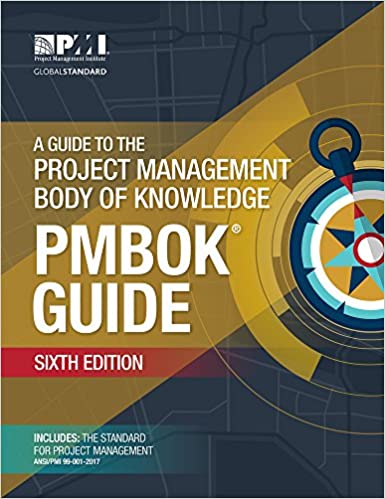
Project Management Body of Knowledge (PMBOK)Introduction a Guide to the Project Management Body of Knowledge (PMBOK® Guide) is a recognized standard for the project management profession. A standard is a formal document that describes established norms, methods, processes, and practices. As with other professions such as law, medicine, and accounting, the knowledge contained in this standard evolved from the recognized good practices of project management practitioners who contributed to the development of this standard. The first two chapters of the PMBOK® Guide provide an introduction to key concepts in the project management field. Chapter 3 is the standard for project management. As such, it summarizes the processes, inputs, and outputs that are considered good practices on most projects most of the time. Chapters 4 through 12 are the guide to the project management body of knowledge. They expand on the information in the standard by describing the inputs and outputs as well as tools and techniques used in managing projects. The PMBOK® Guide provides guidelines for managing individual projects. It defines project management and related concepts and describes the project management life cycle and the related processes.
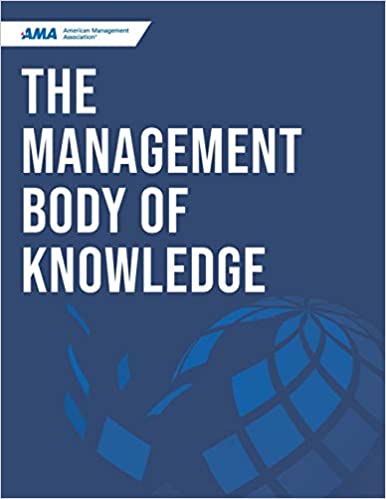
The Management Body of Knowledge is the American Management Association’s flagship publication that sets the bar in management excellence. It outlines the right mix of knowledge, skills and abilities needed for managers to succeed in today’s complex work environment. This resource guide provides the tools and key competencies managers need to excel in management and prosper in today’s market. Mastering the best practices outlined in this book will ensure you have a foundational set of skills to succeed as a Manager.
As a working cybersecurity professional, every attempt is made to separate professional and personal endeavors in a manner consistent with reducing conflicts of interest and maintaining ethics. Statements contained within this site are the explicit and implicit goals, objectives, endorsements, and educated opinion of the author of this site and not those of current or former employers.

